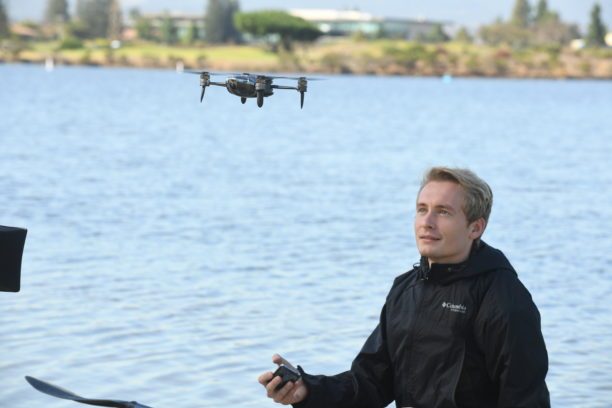
After weeks of negotiations, House and Senate committee leaders have agreed to legislation reauthorizing funding for the Federal Aviation Administration. It won passage in the House and is now headed to the Senate.
The following is a guest post from Kirwan McHarry, Director of Communications for Mota Group, a consumer and commercial drone company.
Miriam McNabb’s series “FAA Reauthorization Explained” nicely summarizes this long and complex bill, so I’ll focus on just a few of the parts that may affect drone companies.
In a major step forward for the industry, the bill supports and prioritizes the Unmanned Aircraft Traffic Management (UTM) system.
In a first, it singles out flight beyond visual line of sight, over people, and at night for their “tremendous potential…to spur economic growth” and makes it Congressional policy that these operations be a top priority for FAA rulemaking.
The bill calls for the Secretary of Transportation, in consultation with the industry, to develop operational concepts for the integration of unmanned aircraft in the national airspace. Included are ways to ensure safe operations while identifying and mitigating risk for operations that may not be.
The bill is good on a number of specifics:
- It requires the FAA to expedite approvals for operations in non-congested / low-risk airspace and offer, when feasible, blanket waiver authority instead of Part 107’s case-by-case waivers.
- It instructs the FAA to establish a process for authorizing manufacturers to self-certify small UAS aircraft using consensus safety standards.
- Notably the bill does not prevent the FAA from requiring remote ID, including for recreational/hobbyists.
- In developing risk reductions, the legislation identifies potential UTM services for unmanned aircraft carrying cargo and/or passengers.
A couple provisions might introduce some uncertainty, at least temporarily, into drone operations.
One of these is a review to be led by the U.S. Comptroller General to identify deficiencies in privacy protections for drone use.
The other involves counter-drone technology. The legislation requires the FAA to review inter-agency coordination and standards for counter-UAS activity, including non-interference with air traffic control and the avionics of non-target aircraft, and to develop best practices for counter-UAS deployment.
The effects of these on drone operations should be specific and limited enough so as to not affect the industry once they are understood.
Two little noticed provisions will affect the more than one million people who fly drones as a hobby.
There have been multiple reports of small drones flown by hobbyists colliding with manned aircraft. In perhaps the best known incident, in September 2017, a hobbyist lost sight of his drone which automatically executed a return to launch point and struck a U.S. Army Black Hawk helicopter. The helicopter pilot made it safely back to base; the drone pilot bought a replacement drone five days later.
The reauthorization legislation adds two additional tools to help ensure hobbyists understand and practice safety: an aeronautical knowledge and safety test drone hobbyists must pass before they can fly, and the requirement hobbyists fly in accordance with the safety guidelines of a non-profit community-based organization whose mission is to further model aviation.
Given the reality of hobby drones flying where they shouldn’t, an aeronautical knowledge test for hobbyists seems like a common-sense measure.
With its five-year authorization of funding for the FAA, the bill provides longer-term certainty for integrating drones fully into the national airspace.
Miriam McNabb is the Editor-in-Chief of DRONELIFE and CEO of JobForDrones, a professional drone services marketplace, and a fascinated observer of the emerging drone industry and the regulatory environment for drones. Miriam has penned over 3,000 articles focused on the commercial drone space and is an international speaker and recognized figure in the industry. Miriam has a degree from the University of Chicago and over 20 years of experience in high tech sales and marketing for new technologies.
For drone industry consulting or writing, Email Miriam.
TWITTER:@spaldingbarker
Subscribe to DroneLife here.
